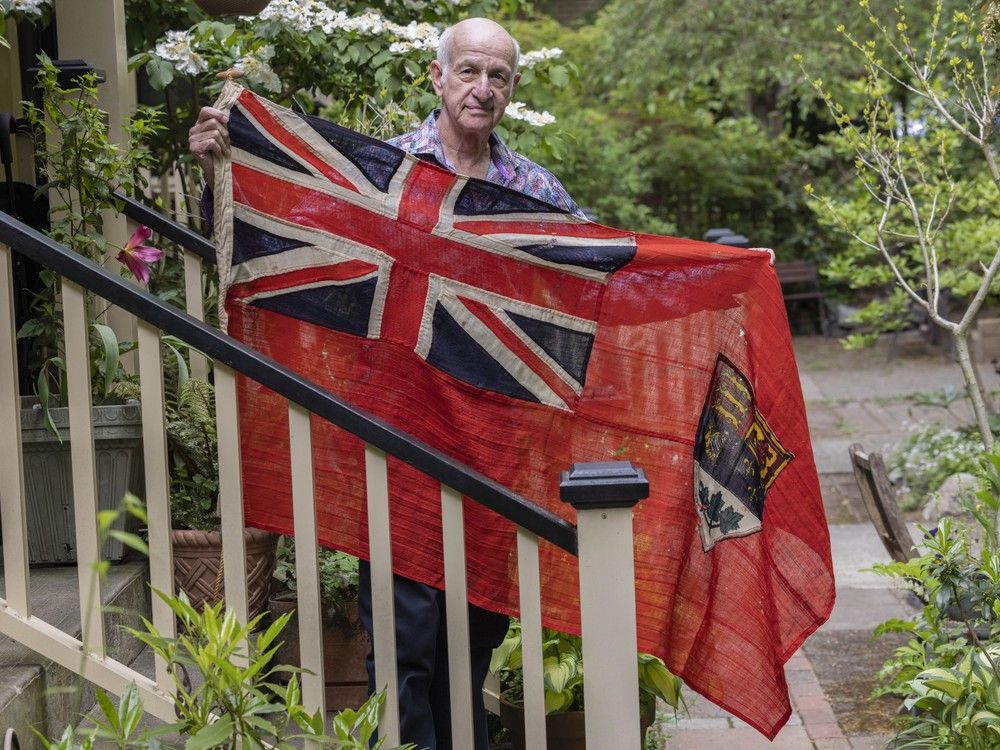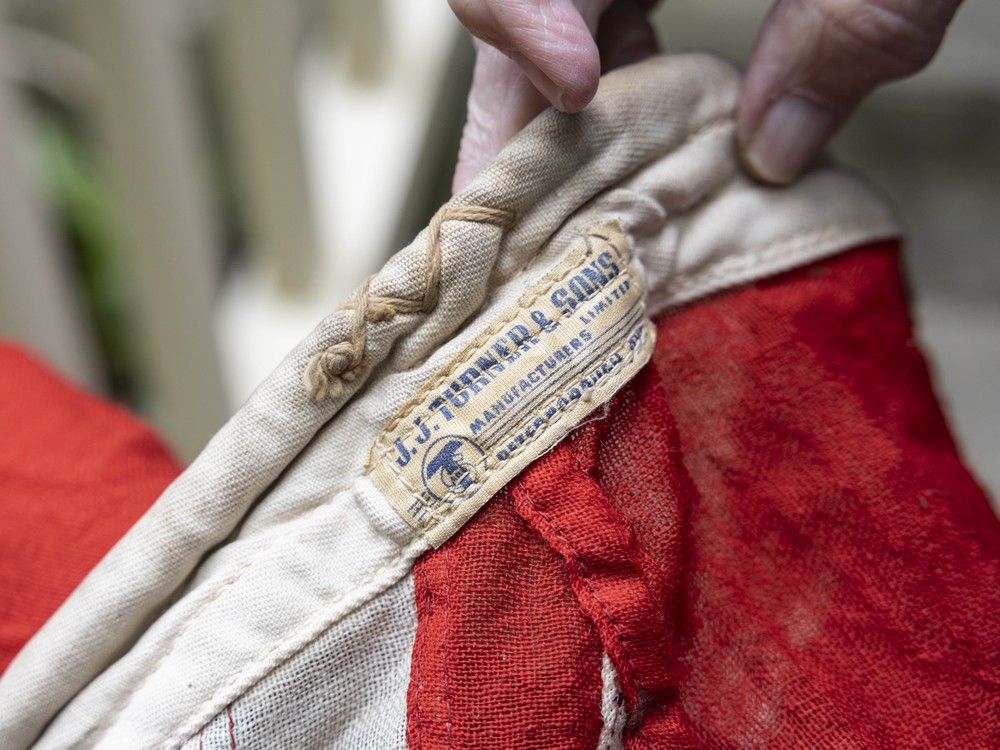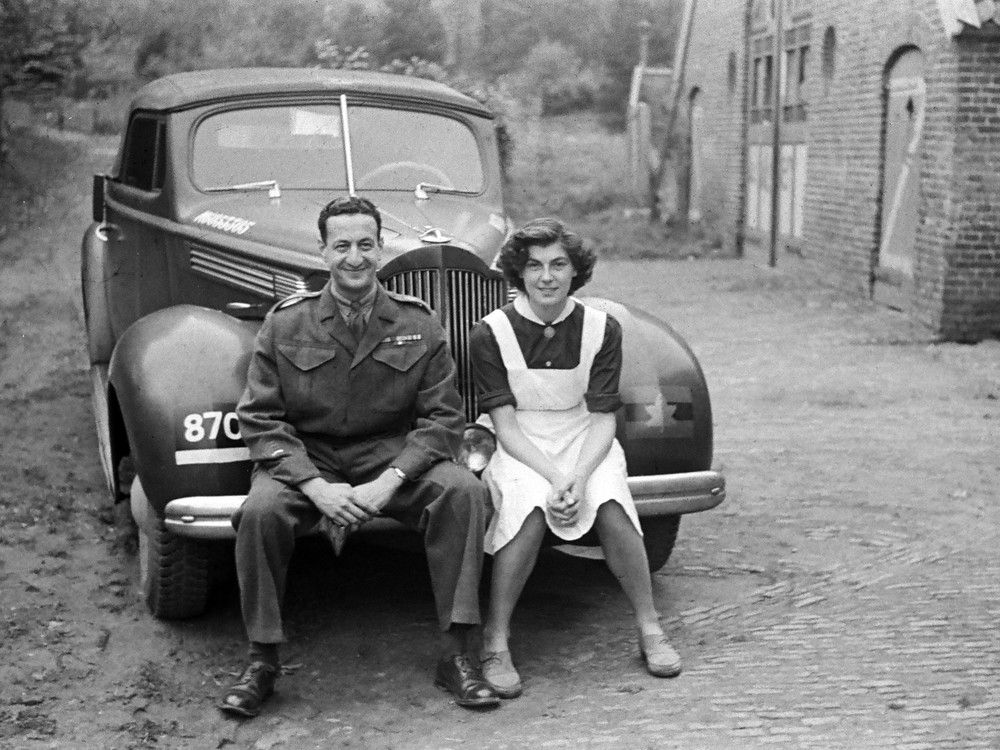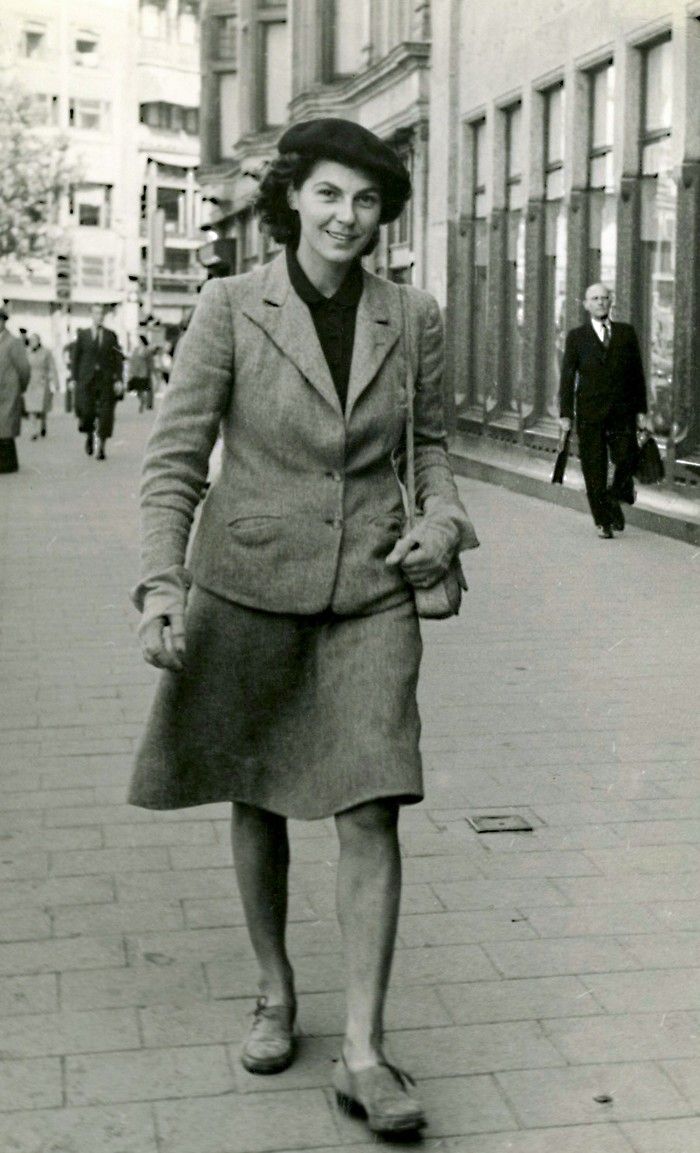
The flag Michael Levenston plans to fly if Canadian democracy falters under the weight of threats to sovereignty, extremism or an act of war arrived at his door last week in a soft, padded envelope.
It came from the Netherlands.
On May 8, as Canada and the world marked the 80th anniversary of the liberation of the Netherlands by Canadian troops. Levenston held the Red Ensign with care.

Like many Canadians, Levenston has felt a surge of nationalism since insults and threats to Canada’s sovereignty began after U.S. President Donald Trump’s inauguration.
When, on Feb. 11, five former prime ministers urged Canadians to “proudly fly their flag,” this one, that his father had carried in the Netherlands during the Second World War, was the one he wanted to fly.
The Red Ensign, Canada’s national flag before the Maple Leaf, has the Union Jack in the corner and has the coat of arms of Canada emblazoned on it. Its now worn through in places, but is still a vivid scarlet, its red-stitched seams holding tight.
The flag belonged to Levenston’s father, the late Lt.-Col. Gerald Levenston, who fought with the 2nd Canadian Corps and was chosen to meet with Nazi Germany’s soldiers in the Netherlands to accept their surrender .
Nearly 8,000 Canadians were killed during the eight-month fight to liberate the Netherlands, which was a pivotal moment in the Allied campaign to free Europe during the Second World War.
Levenston doesn’t know if the holes in the flag are from bullets, or moths. He does know that the flag is strong. It has survived decades, crossed the Atlantic twice and represents not just Canada, but freedom, courage and love.
“This flag has magic in it,” he says.
Levenston learned of the flag some years ago, when, among some of his father’s memorabilia, he found a small film canister. Inside the canister was negatives, with photos of his father’s time in the Netherlands during and after the war.
Among the photos was one of his father sitting with a woman in a nurse’s uniform on the fender of his staff car, a Packard convertible, smiles beaming.

He knew who she was: Ada Charlotte Hugenholtz, a nurse in the Dutch resistance.
While in the underground, she had bicycled through checkpoints, with notes carrying top-secret information hidden in side the handlebars.
Her father had twice been arrested by the Gestapo for his resistance work, but she continued fearlessly, saving many allied pilots’ lives after they were shot down. She smuggled them out of Holland into Belgium by bicycle, disguised as citizens.
“She was incredibly brave,” Levenston said of Hugenholtz, who was in her early 20s during the occupation.
His father, who returned to Canada in 1946, never spoke much about Hugenholtz, only to say she was a special friend.
After developing the photos, Levenston suspected she was something more. Armed with her name, and using genealogy, he tracked her family down in the Netherlands.
They too had questions, and more treasures that Hugenholtz had kept, including a beret that had belonged to his father, a handful of letters from him, and the flag, his parting gift.
Levenston combed through his father’s memorabilia again, and found more clues, including a packet of letters Hugenholtz had written to his father.
The families were able to piece together the story of a wartime romance that took place in Holland over a period of four months, from August to December 1945.
It was a story of two souls thrown together in extraordinary circumstances. She had endured starvation and suffering under the occupation. He had survived active duty, serving first in the infantry and, later, the Canadian Armoured Corps.

And then, love.
“Four and half months can change your whole life,” she wrote to him in Canada after their separation.
His letters addressed her as “My everything.”
“I haven’t been dancing since our last wonderful evening together. I know I shall never enjoy such glorious times again,” he wrote.
He also wrote of the postwar struggles in Canada. A lack of housing for families. Difficulties finding work. Concern for his mother, whom he had to care for as her only child.
She wrote of the Netherlands. “Our dear country. You came here to bring us freedom and happiness. And the joy.”
Like so many wartime romances, their love story would not survive the distance.
Both married and settled in their own countries. Each raised three children. But they both saved the letters and treasures of their time together.
Including the flag.
When the five prime ministers asked Canadians to fly their flag, Levenston knew it was time for the flag to return to Canada.
Hugenholtz’s son, Rein Putman-Cramer, was only too happy to send the flag to Levenston.
“This flag reminds me of the freedom we fought for throughout the world. It reminds me of all that is good about Canada,” said Levenston.
It is also a powerful reminder, said Levenston, of two people from different backgrounds, who were able to fall in love, and fight for freedom and justice, together.